Two Years On: Where are we now?

Written by Hana Malik
Hana Malik is currently an Associate Senior Leader, Head of English with a passion for social justice, diversity and equity.
We decided, after the murder of George Floyd in the US, that we wanted our educational organisation to join the movement against racism and we turned our school towards the necessary work it took to be anti-racist. Now, two years on, I find myself asking where we are and what we’ve achieved, if we’ve made any positive changes to the lives of our staff and students and if our DEI work has moved us forward.
We have heard it before, and it is key to achieving success: DEI work is circular – it is evolving and the work is never ‘done’. It is vital therefore to reflect on progress and ensure the evolutions keep happening.
Ella Washington, an organisational psychologist and founder and CEO of Elevate Solutions (a DEI strategy firm), helps to clarify the ‘five stages of DEI maturity’ and how we might evaluate the work we are doing. The five stages are: aware, compliant, tactical, integrated and sustainable. She explains this in her upcoming book as well as for the Harvard Business Review: https://hbr.org/2022/11/the-five-stages-of-dei-maturity She has also spoken about the three Ps of DEI evaluation.
Purpose
The most important place to begin is with the why, especially because there is (not yet anyway) no standard of DEI in an educational setting against which you can measure your organisation. No teacher standards (although meeting the needs of learners is often cited as DEI adjacent) and certainly no Ofsted criteria under Quality of Education or Personal Development. I consider our school and think about where we were in 2020. Why did we join the movement? Did everyone know where we were going and why we were going there? Did everyone feel safe in joining the journey?
There were great successes in this area, especially in 2020 and 2021. Now however I must admit that our commitment to DEI has become something of an ‘extra’ improvement priority. Not because we don’t believe in DEI, but because, like all schools, the reality of exams, Ofsted, sky-high bills, mean that we are juggling countless balls and it has been hard to hold on firmly to the DEI one. Most important perhaps is the question of whether our why has changed and if as leaders we can be courageous enough to acknowledge that and realign the vision.
Pitfalls
This can be difficult, but honest reflections and consideration of barriers and pitfalls will contribute to successful and sustained DEI work. Were leaders vulnerable and open about why we’d started this journey thereafter building confidence and trust in the staff body? Did staff have a secure and shared language about DEI? Were changes manageable and sustained?
We’ve fallen into some predictable pitfalls. The one that is arguably most challenging is that we have stopped communicating our vision and goals for DEI. Is it still on our school improvement plan? Yes. Do we all know why it’s there and what change might entail? No. Secondly, the work of DEI cannot fall to one person. A DEI champion is great, but what happens when they leave? We know how important middle leaders are in delivering change, and it is in that room we can ensure that DEI is sustained.
Progress
The all-important ‘this is progress’ stage. The curriculum, the outcomes, the senior leadership team. We want to see progress across all elements of our organisation. So, what does progress look like? What does it look like in the short term and the long term? How can we find out where we are now and where we need to go next?
We do have a more diverse and representative SLT. We do have a more inclusive recruitment process from blind CVs to diverse panels. Our students do learn about a wide range of topics; from kabaddi in PE to reframing migration. There are boxes we can tick now, that is true. But we know our work is far from ‘done’. We will need to return to the question of what progress looks like for us and go from there. If schools are microcosms of the society we live in, we need to think carefully about what DEI in a socially just and equitable world looks like. We can then build the change we want to see.
Tidying up: a lesson in values from the Japanese football fans
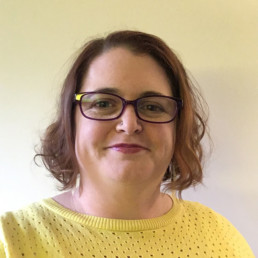
Written by Esther Cummins
Course Leader MA Education (online) at Falmouth University
Every four years, the World Cup offers schools a theme around which to focus their learning. The links to geography and sport are obvious, but further learning opportunities include the application of probability, time zones, languages, and textiles. Unexpectedly, this year we have all been shown an example of community values from the Japanese fans and players.
The pictures and videos that have circulated of spotless dressing rooms and tidy stadiums show the communal value of respecting your hosts held by the Japanese visitors. This representation of fans and players is a far cry from the embarrassing behaviour that is often seen in media reports about English fans. So why is there such a difference in the behaviour?
Interviews with Japanese fans have commonly cited the term, “atarimae”; the English translation is similar to ‘obvious’ or reasonable. From a young age, children take on the responsibility of cleaning their schools before they leave for the day. This task is not an ‘add-on’ to be squeezed into the curriculum if there is time. It is not a quick tidy-up or asking the students to put their chairs on the table. Without this cleaning, the school would be dirty.
I have cleaned schools out of necessity; in a small school where I was a senior leader, the headteacher and I were the contingency plan when the cleaner was absent. I have asked children to wash some toys at the end of a school term. I have asked university students to put their rubbish in the bin. But I have not worked in an environment where it was a regular expectation for the educators or the students to maintain the tidiness and cleanliness of the learning environment.
Within our society, we pay cleaners and caretakers less than we pay our educators. Perhaps this mentality is a hangover from the British Empire, where the wealthy expected their servants to clean up after them. Our values impact our behaviour (Steg et al., 2014), thus it is important to consider what and who we value. When we litter or leave a mess, we are saying we are more important than the environment or those that are paid to clean. Is this who we want to be as educators, and as a nation?
Respect is part of who we are; indeed, “The teaching of respect for others is not only one of education’s more important objectives, but in its absence little, if any, real learning can take place” (Ungoed-Thomas, 1996, p152). If we are viewing our pupils as the citizens of the future, we need to think carefully about the values we are instilling in their lives. Saying we are respectful is different to being respectful; we need to model and insist upon behaviour that mirrors this value.
This issue is about more than tidying up. It can be applied to any of our inclusive values, our desire for equality, and our drive for fairness. If atarimae means stating the obvious, which behaviours and values do we need to instil in our classrooms, from nursery to university, that creates a respectful community we are proud of?
We are yet to see who takes home the trophy, but I know whom I see as the winners of this year’s tournament.
When Does Identity Matter?
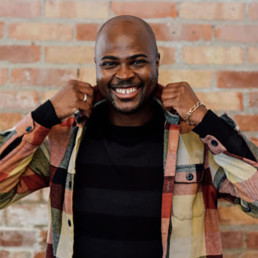
Written by Mahlon Evans-Sinclair
Mahlon Evans-Sinclair is an experienced educator with extensive participation in the fields of learning, professional & personal development, and EDI (Equity, Diversity and Inclusion).
A good rule of thumb is being able to articulate its relevance to yourself.
I often read many stories/recollections that involve identity markers as a descriptor.
I’ve reasoned with the many manifestations of how people use them and figure that whatever the expression, the main reason is to draw attention to something that seemingly has relevance to the story… but does it always…
A former colleague would often tell stories and when an identity descriptor would come up, they would often pause and say ‘and (e.g. race) is relevant to the story here because’… At first it would take me out of the story as I would wonder what the point of drawing attention to it was for, but the more I heard it being said, the more I felt comfortable and more understanding of its intention – It was a signifier for both the storyteller and the audience that the inclusion of this marker was intentional and why.
In thinking about how we use markers in education, sometimes we implicitly state things and expect that others instinctively know what we mean, or we (un)intentionally ‘add weight’ to the meaning of our stories by throwing in unexplained identity markers as though they are adjectives.
Consider for example that one of the students in a class has a learning difference that needs to be taken into account. It makes sense to say, ‘and this status matters here because (it will help with your planning/seating arrangements/conversations with them and their family)’. Consider that the same student happens to be the only non-white student in the class. Would stating that there’s a ‘Black kid with dyslexia’ in the class be helpful in the same way?
It’d be useful to think about what you’re actually intending to state.
– Is the race as important as the learning difference?
– Do the race and the learning difference compound?
– Are there no other ways of describing the student?
You could say that this would be simply solved by knowing and using the student’s name – yes(!) – however, we don’t always do this, especially when retelling a story to an audience who may not have the same level of connection to the subject matter.
So, consider when telling a story that involves an identity marker (such as race, gender, age, sexual orientation, physical or mental difference, etc), add in a clarifier of ‘their identity matters here because…’ and see if it actually does.
Diverse Educators: A Manifesto - Book Review
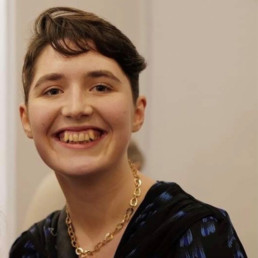
Written by Madeleine Spink
Madeleine completed a PGCE in Citizenship at the IOE after studying at the University of York and Goldsmiths. Madeleine now teaches Sociology, PSHCE, Oracy and History at Langley Park School for Girls in Bromley.
Diverse Educators: A Manifesto is edited by Hannah Wilson and Bennie Kara, with contributions from over 100 educators, structured around the Equality Act 2010.
It starts with a quote from Maya Angelou that “diversity makes for a rich tapestry, and we must understand that all the threads of the tapestry are equal in value no matter what their color.” The books format is best described as a tapestry. It is made up of ten chapters, one for each of the nine Protected Characteristics (Age; Disability; Gender Reassignment; Pregnancy and Maternity; Marriage and Civil Partnership; Race; Religion and Belief; Sex; Sexual Orientation) with a tenth chapter exploring intersectionality.
The book is collaboratively produced and mixes personal and professional experiences. Educators generously sharing their experiences and learning include primary and secondary teachers from all age groups, backgrounds and life experiences. The book develops the readers empathy to the diversity of educators, as well as the diversity of opinion of people within each protected characteristic. For example, the chapter on disability includes personal experience, the need for disability in RSE, practical tips to involve students in curriculum planning and data on the permanent exclusion rates for disabled students. It feature’s ACT’s own Lee Jerome on Intersectional Citizenship as a status, a feeling and a process. The chapter on Transgender inclusion is also insightful and talks about Lucy Meadows, whose death should not be forgotten by teachers who have followed her into the profession.
Deep questions are asked throughout, and the contributions informed my thinking about whose responsibility inclusion is, whose work it often ends up being and whether inclusion work is for the long term or ‘en vogue’. I would have loved to have seen a chapter talking about working class teachers existing in the middle class school environment, and how this identity intersects with the protected characteristics.
The variety of editing and writing styles did make the manifesto lack cohesion and feel inaccessible at times. The structure takes time to get used to, and can be navigated either by starting with the editors overview and selecting the sections that appeal to a particular interest, or by focussing on the key takeaways and ‘contributions’ to the manifesto at the end of each chapter. This changes depending on how the chapter has been edited, and some chapters are referenced while others lack referencing. It is a tapestry of a book, to capture such a variety of perspectives is a huge achievement, but not everything will appeal to everyone.
Diverse Educators is a book to dip in to, reference and use as a guide to practical steps that can be taken to inclusion. It would be a good choice for a staff book group and comes with a reading guide and questions. There’s a lot of ways this resource can be used and shape teaching, learning and the school environment.
More isn’t enough
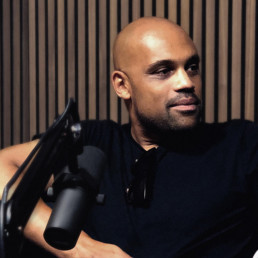
Written by Charles Golding
Charles Golding is a creative director and filmmaker, a disruptor with a passion for change.
CARGO, Charting African Resilience Generating Opportunities, was launched in 2018 to address the lack of inspiring African and African diaspora narratives in education. Since then, awareness has been raised of the bias in representation in the current curriculum.
In the wake of the resurgence of the Black Lives Matter movement in 2020, many groups and organisations have sprung up to address the inequality and lack of diversity in business and education. We cannot be sure whether these organisations were echoing the zeitgeist or capitalising on the moment. Either way, we are now in an unprecedented time where diverse resources and educational tools are available on a scale unimaginable a few years ago. From major publishers, academics and celebrities, it seems many people have thrown their hat into the ring to help address the perceived lack of Black history within our classrooms.
When CARGO began its journey into the world of education, we made a number of conscious decisions that would help define our focus and ambition. As Lawrence Hoo, CARGO co-founder recounts in the BBC documentary The Classroom Revolution: “At school, we weren’t taught white history.” This is an important distinction with the language we use to describe our work.
We choose not to categorise the material we created with the binary simplicity of racial politics. We put language at the heart of our material. For example, we use ‘of African and African Diaspora heritage’ rather than ‘Black’; ‘of European heritage’ rather than ‘white’; ‘enslaved people’ rather than ‘slaves’. Our choice of words help to humanise often dehumanised narratives and define our direction.
Another important distinction is our focus on engagement. We do not want our material to feel like a traditional classroom resources. We approach the creation of CARGO Classroom resources with a desire to create material that will engage, educate and entertain.
Beyond our drive to address the inequality within the secondary school system was a realisation there was a need to energise and enrich the dusty and often antiquated environment of teaching in schools. We understood there was a void beyond racial inequality that spanned generations. The traditional institutions that have governed the distribution of educational material are no longer fit for purpose and have become out of touch with the needs of today’s students. Pupils are demanding change, and all too often, are taking control of their own learning. Due to this demand, we are now developing KS1 and KS2 primary school resources as an addition to the CARGO Classroom KS3 secondary school resources currently available.
No longer can the current frameworks and structures that have governed learning be adequate to fulfil the ideals and aspirations of the coming generations. We want to create materials that would be appropriate for children raised in the age of mass media and gaming. In an environment where information is more accessible than ever before, we know it is important to elevate our material to compete with the ever-changing landscape of digital media.
The CARGO Classroom resources utilise rich, illuminating content from contemporary illustrations, engaging narrative poetry and cinematic videos. We acutely realise the importance of broader representation within teaching and the cross-cultural gains that can be made through a deeper knowledge and understanding. However, the information is only part of the puzzle with the method of delivery and context of the learning being equally as important if we are to inspire engagement and retain learning.
As part of the BBC’s ‘Classroom Revolution ’ documentary, Lawrence visited two children who had been excluded from mainstream education. These students were categorised as hard to reach and subsequently hard to motivate and engage. Their teacher, Rebekah Leese, decided to structure an activity around one of the CARGO Classroom lessons. What you don’t see in the film is as the lesson continues, tutors from other classes gathered in the corridor in amazement as they attempted to look through the windows of the classroom. They couldn’t believe the children stayed engaged for as long as they did. Rebekah remarked: “We are lucky to maintain their concentration for 20 minutes; they were engaged for over an hour.” We now understand one of those students is pursuing history as a subject for further study. Obviously not every classroom will benefit from such a monumental learning experience as a result of CARGO Classroom resources. However, the context and delivery of resources should remain at the forefront of our desire to rejuvenate the landscape of modern learning. It isn’t enough to just supply the material and tell different stories, it’s about how you tell those stories and how we can maximise engagement. We are not interested in ticking boxes; we are here to pull down barriers and broaden ambition.
For more information about CARGO Classroom, please visit www.cargomovement.org/classroom
Being the teacher that I never had...

Written by Craig Weir
LGBTQ+ Educator, Consultant and Safeguarding Lead
People often ask why I became a teacher. The answer – to be the teacher that I never had.
My own secondary school experience was tough. I lived in a small town off the west coast of Scotland where social status was defined mostly by what football team you supported: Rangers or Celtic. My lack of interest in either team made me an outcast to the boys in P.E, leading to me being picked last for all sports and seen as less alpha. It was obvious that the boys quickly assumed that I was strange because I didn’t see football as the most important thing at that point. It wasn’t that I wasn’t interested or good at sports; the assumption was that I was different because I couldn’t participate in the locker room “banter”.
This was the start of the multiple years of being bullied for being a “fag”, “gay boy”, “poof” or “bender”. These words were hammered into me daily from what felt like many and most of the boys. Instead of reporting this, I decided to hide my upset for the fear of looking weak and upsetting my family. It was, in fact, my cousin who spoke up when they witnessed the unkindness of their own friends towards me. When my mother finally asked the school to step in and help, they really could not and did not do much. The school were confined by the section 28 legislation that banned the promotion of homosexuality; I still struggle with this now. Unfortunately, the school did not act with speed or strength, which led me to absorb similar abuse throughout most of my school years. In all honesty, I think I’d struggle to write how I really felt at this time. In fact, this is a time that I have lost as it feels better to have “forgotten” what really happened. What I do know is it does – and did – get better.
On leaving school, I trained in musical theatre at a very famous drama school in central London. The fact that I was moving hundreds of miles away from the pain was comforting. I was a real-life Billy Elliot and finally recognised myself and sexuality in others around me. This eventually led to me working in theatre, television and film with some of the biggest names in the industry. I never thought I was going back to secondary school… ever.
Like others, I found the pressures of work got to me and my love for an industry was being destroyed by the conditions I worked under. I was constantly showing poor health and was “blue lit” to hospital after a suspected brain aneurysm which was in fact stress. I hated my job, the hours, and the fact it was destroying one of my biggest loves – the theatre. I also felt too proud to admit that this wasn’t for me. I was worried that I had failed. Again, I was worried that I would upset others and seem weak.
With the support from my partner and my family. I quit my toxic career and retrained as an English teacher. Why? This went back to the hope that I could support someone in a way that was never available to me.
I now work at a comprehensive school in South London. The school has a large focus on sports and it could be said it’s pretty alpha in many ways: competition is very important.
As an English teacher, I went back into the closet and kept my private life private. Some of my colleagues were aware and encouraged me to be open publicly within the school. For some reason, I just could not do it and I didn’t know why.
I now want you to imagine a Wednesday afternoon. I was teaching Romeo and Juliet and Mercutio has just started the “Young Hearts Run Free” scene in Baz Luhrmann’s movie version. My class was overrunning; another class were waiting at the door ready to come in. It was a busy corridor. As I released my class, the popular girl in year 8 was at the door – strange because I did not teach her. This is the girl that can command the attention of her peers in a breath. I’m sure you know the type. Anyway, she knocks on the door asked loudly:
“Sir, are you gay?”
In all honesty, I was shocked by my reaction and shocked by her direct question. She repeated:
“I said sir, are you gay…?
My reply… “no”.
Why did I reply with this?
I then had to teach my next class with a racing heart, struggling to catch my breath, sweat pouring down my face and barely able to think clearly. I was not prepared for the question about my sexuality. I was not prepared to be transported back into the boy who stood in school feeling terrified of the question that I didn’t know the answer to.
After this experience, I thought for a long time about why I had replied “no”. I was mortified and hurt at my response. Why did I go back “into the closet” after 15 happy years out of it?
My colleagues have been brilliant; my leadership have been even better. They understood the pain and allowed me to speak. They allowed me a safe space to decide what I wanted to do.
This year, I decided to tackle this trauma myself. I was going to try to be more forthright. This started with a quick chat about equality with my year 8 class. When they asked me about my wife, I quickly corrected them and said I had a male partner. None of the students had much of a reaction but, for me, the feelings of worry and trauma came flooding back. However, I knew that this time it was on my terms.
I had started to feel empowered and more authentic. I knew that by being in control, my history and identity could be used as a positive rather than negative. So, I and another colleague decided to run the LGBTQ+ club in school. Doing this with another member of staff made me feel safe and supported. The school honoured the decision to have two members of staff on this club as they knew the support we gave one another was important. I could not have done this without her.
LGBT+ History month came round and, as Heads of Year, we both knew that we’d like to deliver an assembly to our year groups on allyship and the history that came before us. Eventually, this turned into a whole school assembly that was delivered to every year group across the week. Honestly, I was terrified. I was ‘outing’ myself to every student and staff member in the school. Starting with the Equality Act, I informed the students that I was delivering this assembly as a gay man. I could feel myself becoming emotional and I’m sure this was obvious to the students too. I was numb and couldn’t speak anymore but the band-aid was ripped off. My colleague was my hero in this moment: in all 5 assemblies she stepped in and swiftly carried on until I could compose myself to continue.
Every assembly got tougher, despite me thinking they’d get easier. I started to see myself as vulnerable again. As the year groups got older, their reactions became louder – particularly the boys, who presented with a mixture of shock, laughter and smiles. This made me feel exposed but my hope was that my pain would be far less than the gain for the students who needed to hear this.
The assembly was received well. Children I’d never met before were saying hello to me. It was positive.
Was there a negative? Yes. I remember a teenage boy stirred up a small anti-ally party in one of his lessons immediately after the assembly. The teacher, of course, had my back and had him removed immediately. Nevertheless, I remember this more than I remember the positives. Recently, I’ve had an experience of another boy miming certain physical acts that he thinks are related to me. Sadly, both obvious negatives here came from boys, boys that are respected and known by their peers. Whilst this could be another trauma trigger… by releasing my pain and worry, I have realised, I’ve gained strength.
Honestly, I have no idea if my experience or honesty has helped anyone at school. What I do know is that I have helped me. Would I have done things differently? Absolutely. However, when we struggle with pain or trauma, I truly believe we can only do our best in that moment. I have amazing friends and colleagues who have supported me in being honest, transparent, and visible. Hopefully, this visibility will help someone else one day.
Why Don’t We Talk About Intersectionality in Schools?
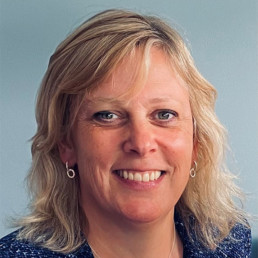
Written by Dr Jo Trevenna
Dr Jo Trevenna has over 20 years' experience of educational leadership from early years to post-graduate level. Her ongoing academic interests centre on Leadership and EEDI. Her company, Potential Education, offers leadership reviews, support and training and EEDI-focused school support.
There can’t be many of us still thinking that human identity is singular. Right? Aren’t we a combination of diverse characteristics that create and impact on our existence? Expectations and assumptions around combinations of characteristics are increasingly illuminated in societies, with light thrown on those who experience multiple discrimination and shade thrown on those who discriminate against those with different combinations of characteristics. The complexity around identity is foregrounded in explorations of intersectional discrimination. Yet intersectional disadvantage is not generally a focus for English schools.
Why?
Is it a lack of understanding and awareness or the lack of external accountability?
The Law
Critical awareness of the vulnerabilities faced by those with exact combinations of identity characteristics was first associated with the legal work of Kimberlé Crenshaw which looked into the discrimination experienced by African-American women in terms of ‘intersecting patterns of racism and sexism’ (Crenshaw 1991, p1243). Crenshaw asserted that anti-discrimination legislation in the United States did not actually protect African-American women because, when making legal claims against an employer, this particular group had to choose between a focus on either their race or gender, even though the discrimination they faced came at the ‘intersection’ of these two identity characteristics.
Section 14 of The Equality Act (2010) recognises the potential for discrimination pertaining to ‘combined discrimination: dual characteristics’ (Legislation.gov.uk 2010). The focus here is limited to direct discrimination against the combination of only two characteristics. More significantly, Section 14 has never, in fact, come into force. It just sits there in provisional status.
As it stands, therefore, the law does not adequately protect against intersectional discrimination and, in terms of English schools, there is no legal imperative to tackle intersectional discrimination.
Publicly Available Data
Published performance table data is hugely significant for schools. The first stage of the high profile ‘school and college performance measures’ website offers only a single-axis approach to pupil data. Some basic intersectional data is available on the ‘Explore Education Statistics’ section of the platform relating to ethnicity and disadvantage, disadvantage and gender, SEN and ethnicity. However, the data remains on cohort numbers and does not provide any information which may indicate the impact of those intersections on pupil academic performance, exclusions/suspensions and attendance. FOI requests can be made and the GOV.UK website also offers the facility for researchers through its new Grading and Admissions Data for England (GRADE) service. This service may be a significant step forward in terms of higher level transparency but it does not provide readily accessible data to the public on intersectional discrimination affecting pupils.
Data revealing the intersectional factors affecting pupils is available to school leaders and governors, local authorities and Ofsted via the ‘Analyse School Performance’ (ASP) secure access platform. Filtering mechanisms enable reports combining specific pupil characteristics, eg: boys with SEN, and scatterplot graphs make it relatively easy to identify patterns of underperformance because of key combinations of protected characteristics thereby highlighting potential impact of discrimination and flagging up need to address. Another school performance document is the Inspection Data Summary Report (IDSR), which is accessed on the secure ASP portal. The IDSR is a key document for Ofsted Inspectors when preparing to inspect a school and informs initial discussions with headteachers. Like the ASP tool, the IDSR does provide schools and Ofsted with a retrospective mini intersectional tool in its coding on scatterplots of the progress and attainment of pupils by binary gender classification and SEN status and deprivation status. However, there is no public access to this data.
To sum up: disadvantages experienced by pupils with specific combinations of identity characteristics in English schools are not readily flagged in publicly published school data. Perhaps Ofsted, which does have access to this anonymised intersectional data via the ASP and IDSR, has the potential to be the driving force in helping schools engage with intersectional discrimination.
Taking a sample of 68 Ofsted Section 5 inspection reports published in a six month period (not including those which inspected an already ‘Good’ school), there are only references to single-axis identity characteristics. In this sample, Ofsted, as the key inspection mechanism for schools, does not engage with the impact of intersectional discrimination on pupils. The lack of referencing in this sample of reports is not surprising given that Ofsted’s School Inspection Handbook only relates identity characteristics on a single-axis framework.
As it stands, then, there is no legal accountability, no easily accessible public data to enable transparent exploration of the impact on pupils and little Ofsted engagement with intersectional discrimination and disadvantage. Right now, without the external accountability structures, it is the choice of school leaders whether or not to adopt an intersectional approach to their schools. Given that most of us agree that identity has multiple components, it is surely time to explore how an intersectional approach can throw light on intersectional disadvantage and discrimination and therefore help schools to tackle it head on despite the lack of an external accountability framework.
On Disability #IDPwD2022
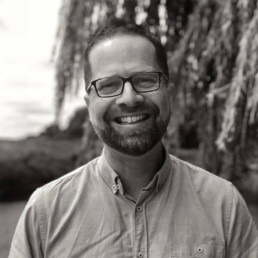
Written by Matthew Savage
Former international school Principal, proud father of two transgender adult children, Associate Consultant with LSC Education, and founder of #themonalisaeffect.
“My own heart let me more have pity on; let
Me live to my sad self hereafter kind,
Charitable…”
(Gerard Manley Hopkins)
In many ways, I have enjoyed my return to face-to-face consultancy, and to the buzz, warmth and joy of human interaction. However, I have also realised something else: on Zoom, I was not disabled. On Zoom, I could still walk and run, swim and cycle. On Zoom, I did not need my wheelchair, crutches or mobility scooter to move around. On Zoom, nobody would have known I was any different.
In recent months, I have been to restaurants with friends and colleagues, and I have developed an interesting habit. As soon as I am seated, I ask that my scooter and crutches are taken away out of my view and the view of others. I do the same when I am speaking to an audience too. Somehow, I seem to think that, if my disability is hidden from view, it will no longer exist.
When I first became ill, the talk was all of diagnosis and recovery. Medics were optimistic, and friends and family still asked that I “stay positive”. However, with time, the medics started to lose hope, and friends and family, not knowing what to say, chose, instead, to say nothing. It feels increasingly like my present has become my future, the two intertwined.
Although often relentless and ablaze, my pain is silent: mixing medication and mind muscle, I try to ensure that nobody knows. Similarly, I have managed to mask my encroaching stammer so far, although I know I will start to lose that battle soon. But people see my inability to walk before they see me; and, therefore, try as I might, it cannot be hidden.
This has presented me with a problem. As my disability becomes my body, I cannot be ashamed of one without being ashamed of the other too. Like many who have survived childhood trauma, I have a lot of shame, but I have realised that I cannot be ashamed of my disability. And that, as long as it is a guest in my house, I must welcome and embrace it as myself and, in so doing, love it too.
#DisabilityAwareness #DisabilityPride
Desire to study diverse drama and playwrights in schools not matched by current educational landscape
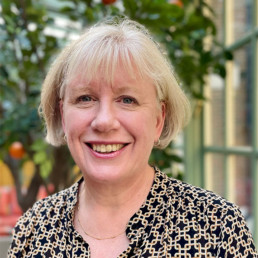
Written by Margaret Bartley
Editorial Director for Literary Drama at Bloomsbury. Since 2002 she has been the Publisher of the Arden Shakespeare and now has editorial responsibility for Bloomsbury's digital platform Drama Online, the Methuen Drama imprint, and the Arden Shakespeare. She is Bloomsbury’s representative on the Lit in Colour Advisory Board and sponsor of Bloomsbury Academic’s Diversity, Equity and Inclusion working group.
90% of drama texts taught at GCSE and 96% at A Level English Literature are written by white playwrights
New research released today by Bloomsbury Publishing, through its Methuen Drama imprint and as part of its Lit in Colour programme, illustrates the popularity and contradiction of teaching drama texts for English Literature at GCSE and A Level in today’s secondary schools in England and Wales.
Drama (excluding Shakespeare) is not compulsory in the GCSE English Literature specification, yet 93% of teachers who responded to Bloomsbury’s survey choose to teach a drama text to a GCSE class. Under 2022 curriculum specifications, drama texts by white playwrights account for 90% of drama texts taught at GCSE and 96% at A Level English Literature. This contrasts with 93% of teachers who said they would like to see a more ethnically diverse range of writers offered by exam boards. This desire from teachers is met with student demand. Of the teachers surveyed, 65% said there was a demand from their students to study more ethnically diverse writers.
Launched in 2020 by Penguin Books UK, alongside race equality think tank The Runnymede Trust, the Lit in Colour campaign aims to support UK schools in diversifying the teaching of English and to increase students’ access to texts by writers of colour and from minority ethnic backgrounds.
Bloomsbury’s Methuen Drama imprint has a world-class play portfolio and playwright relationships that complement and expand on the original Lit in Colour campaign. The programme’s aim is to introduce new plays to the curriculum, offering students access to more diverse, representative and inclusive work, opening up the ways in which all drama texts can be studied, creating new ways to explore plays and contributing to wider discussion and representation in the classroom.
Other findings from the research illustrate the important role drama plays within English Literature at secondary school study:
-
- There are currently just 2 drama set texts by Global Majority writers available at A Level English Literature
- With the right support and resources in place, 84% of respondents said they would be likely to choose a new drama text for GCSE English Literature
- We asked teachers about the support they need when teaching drama set texts: the top three resources listed were recordings of performances (67%), model student answers to exam questions (65%) and resources on social/cultural context (57%)
- 66% of survey respondents said they would like more support to teach texts that tackle issues relating to race or ethnicity
-
- 0% of students answered an exam question on a play by a Global Majority writer in England in 2019*
- In England in 2019*, 79% of GCSE English Literature candidates answered an exam question on a drama text, 349,337 students (65%) answered a question on An Inspector Calls in 2019 assessments
Margaret Bartley, Editorial Director for Literary Drama at Bloomsbury, commented: “The landscape of teaching drama in English schools has remained largely unchanged. Our research shows that there is real appetite for change and that publishers, theatre makers, examiners and teachers need to work together to deliver change to the curriculum. If we empower teachers to switch texts with confidence, students can continue to benefit from the positive impact and influence of studying plays. In the future, those plays will better reflect the student cohort and ensure students see themselves represented in the texts they study. Bloomsbury is committed to playing our part in delivering this change through our proactive programme of new play text publishing, supported by the resources teachers and students need to study and enjoy them.”
Change is coming – what should the future look like?
Real change is coming. Just two years on from the Lit in Colour campaign, efforts are being made by all five major awarding bodies in England and Wales to diversify the set texts within both GCSE and A Level specifications for English and Drama. By 2025 English Literature students in England and Wales will have the option to choose from 10 new modern play texts by writers of colour at GCSE and A Level.
The importance of live performance
Drama can be more accessible than other genres and many enjoy the interactivity that the format brings. A 2015 curriculum change to English Literature removed the necessity for a student to watch a live production, leading to systemic changes in the teaching of drama texts as part of the English curriculum, which are difficult for teachers to counter.
Teaching drama as an experience through live performance is critical in the successful introduction of new plays. When diverse texts are performed in theatres and included on the school curriculum, more could be done to engage with the playwrights themselves. There needs to be more opportunity for playwrights to talk about their work and context, and for schools and teachers to engage with playwrights directly.
Having access to staged performances through services such as Bloomsbury’s Drama Online, which has collections of filmed live performances including those from the National Theatre and Shakespeare’s Globe, is vital to bringing teaching to life, inspiring debate and illustrating what the author or playwright is trying to convey.
Empowering teachers to take a different approach
The research shows a clear desire among teachers to expose pupils to a diverse range of literature, driven by the need to reflect the student cohort and ensure students see themselves represented in the texts they study. There is also a desire to share diversity of thinking and hear voices other than their own. Importantly, this needs to represent a variety of backgrounds and to portray a range of lived experiences including, but not limited to, race-related issues.
Introducing new play texts to the classroom is a big undertaking and requires time and energy from teachers who are already stretched and time-poor. It is clear that teaching a new text is a significant undertaking for teachers who need to create new schemes of work and lesson plans, and research the text’s critical and performance history. Research responses show that teachers prefer to refer to past papers and evidence of the approach taken in assessment for benchmarking their teaching plans. This understandably means teachers often choose to teach the familiar and reliable options with which they have had positive learning and exam outcomes in the past.
Giving teachers the tools they need will empower them to teach new texts and approaches with greater confidence, helping them achieve the success they want for their students.
Teachers also told us that they have more freedom at Key Stage 3 (KS3) to choose diverse texts, as the curriculum is not limited by exam specifications. Teachers can therefore introduce drama texts from diverse writers at KS3 and build confidence in the teaching of these texts, before being limited by exam specifications at higher key stages.
There is also an opportunity to teach the familiar set texts differently, while they remain on the syllabus, by reframing how they are taught. Alongside new texts from diverse writers, existing texts can be taught through a different lens that resonates more with today’s students, such as gender, identity or class. Given the predominance of plays like this, reframing the way established canonical texts are presented offers teachers and students enriching ways to engage with them alongside newer texts.
Methodology
This report draws on research from multiple sources: a quantitative survey, in-depth interviews, roundtable discussion and desk research. Participation was entirely voluntary. Research was carried out by independent research company Oriel Square Ltd and supported by Insightful Research. The online survey, carried out in June 2022, targeted teachers of GCSE English Literature in England and Wales. Of the 141 respondents, 16.3% identified as Black, Asian or of Multiple Ethnic background, compared to 10.4% of teachers in England. Interviews were conducted with a sample of four teachers, selected either because they were taking part in the Lit in Colour Pioneer Pilot programme, ran in partnership with Pearson Edexcel, or because they had responded to the survey and agreed to take part. As a response to the teacher research, Bloomsbury, the National Theatre and Open Drama UK hosted a roundtable discussion with stakeholders from publishers, awarding bodies, theatre organisations, and practitioners, authors and playwrights to discuss how the drama and theatre community could support schools with the teaching of diverse drama texts.
*2019 assessment data was used in the research as the most reliable data, as COVID-19 interrupted live exams data and 2022 data is just being published
Media enquiries: to Ginni Arnold, Head of Corporate Communications at Bloomsbury on ginni.arnold@bloomsbury.com or 07968730247.
Editors’ Notes
Bloomsbury English and Drama for Schools list includes:
- The popular Student Edition series and GCSE Student Editions and Guides featuring plays for more than 14 core set texts for GCSE and A Level English Literature and Drama such as Blood Brothers, A Doll’s House, DNA, The Crucible, and An Inspector Calls.
- The Arden Shakespeare Third series for A Level and beyond, and Arden Performance Editions for performance and study.
- The RSC Shakespeare series, including The RSC Shakespeare: Complete Works and 36 individual play editions.
- New Mermaids series for classic play editions including Doctor Faustus and The Duchess of Malfi.
- The ever-growing Plays for Young People series which offers age-appropriate plays by a diverse selection of contemporary playwrights for young people to perform and study.
Find out more at Bloomsbury.com/DramaForSchools and @MethuenDrama
About Bloomsbury
Bloomsbury is a leading independent publishing house, established in 1986, with authors who have won the Nobel, Pulitzer and Booker Prizes, and is the originating publisher and custodian of the Harry Potter series. Bloomsbury has offices in London, New York, New Delhi, Oxford and Sydney.
About Lit in Colour
Lit in Colour was launched by Penguin Random House and The Runnymede Trust in October 2020. The campaign aims to ensure English literature better reflects contemporary culture and society, to increase understanding around racial equality and to give students access to a diverse range of authors and books.
Lit in Colour published a major piece of research: https://litincolour.penguin.co.uk/ Diversity in Literature in English Schools in June 2021 which reviewed the current state of play in English Literature education and made practical recommendations for change, carried out by an independent team at Oxford University’s Department of Education.
Find more information at penguin.co.uk/litincolour and @PenguinUKBooks
About The Runnymede Trust
The Runnymede Trust is the UK’s leading independent race equality think tank. We generate intelligence to challenge race inequality in Britain through research, network building, leading debate, and policy engagement.
Runnymede is working to build a Britain in which all citizens and communities feel valued, enjoy equal opportunities, lead fulfilling lives, and share a common sense of belonging.
In order to effectively overcome racial inequality in our society, we believe that our democratic dialogue, policy, and practice, should all be based on reliable evidence from rigorous research and thorough analysis.
@RunnymedeTrust |runnymedetrust.org
The 3 Cs of DEIB Work: Consciousness, Confidence, Competence

Written by Hannah Wilson
Founder of Diverse Educators
Our Journey
When I am running training on DEIB (Diversity, Equity, Inclusion and Belonging) for different stakeholder groups, I suggest that they see this work as a journey. The DEIB journey is one we go on individually and collectively, personally and professionally. The journey is non-linear and quite messy – different people will go off on different routes to reach the same goal and people will get on and off at different stages. This journey is a marathon and not a sprint, so we need to pace ourselves and we need to sustain our commitment to the work.
Motivation to go on this journey is great, but it is the habits that we unlearn and relearn, that will enable the DEIB vision to become embedded into the provision. This is where we see impact and we can make change happen. Moreover, this journey has three parallel lanes. The 3Cs of Consciousness, Confidence and Competence are my way of breaking down the different things that we need to develop in ourselves and each other.
Our Consciousness
Def. the state of being aware of and responsive to one’s surroundings; a person’s awareness or perception of something.
We need to start here, fighting our bias for action as educators like to do and get busy finding solutions to problems. But we need to start with the being. We need to become aware of ourselves, of each other and of the environment in which we are existing.
Consciousness is about exploring our own identity, recognising our own bias and navigating our own power and privilege. We need to become conscious of what we have not experienced, of what we have not been exposed to, of who we do not know.
We talk about getting ‘comfortable with being uncomfortable’ because we need to do the ‘inner work’ before we can start the ‘outer work’. We need to start with understanding ourselves on a deeper level.
The call to action is to be able to look in the mirror and to understand who we are and what shapes our thinking/ behaviour.
Our Confidence
Def. the feeling or belief that one can have faith in or rely on someone or something; the telling of private matters or secrets with mutual trust.
With increased awareness, we recognise that we do not have all of the answers. So we need to get confident in acknowledging that we are not the expert and that we need to listen to and learn from others. As we grapple with new concepts and new language, we need to model that we are going to get it wrong, that we are going to need support and feedback, and that we will make mistakes, but we will learn from them.
Confidence is about getting curious and asking more questions. We need to listen to others, to their lived experience, in order to expand our own perspective. We need to have the confidence to discover some hard truths about our organisation.
As we become confident engaging with the subject matter, we then need to become more confident in what we say and what we do. We need to stand up and speak out on issues impacting our community, we need to call in and call out behaviour and language that is not inclusive.
The call to action is to be willing to be courageously open and vulnerable.
Our Competence
Def. the ability to do something successfully or efficiently; the quality or state of having sufficient knowledge, judgment, skill, or strength.
With consciousness and confidence, we can then start developing our competence. In order to do the work in realising our DEIB intentions and bringing our vision to life, we need to develop new skills.
‘We don’t know what we don’t know’ until we start the learning journey. By slowing things down we can be more intentional in identifying the gaps in knowledge and in planning the training to close these gaps over time.
Being competent means that we develop muscle memory, we practise until the new skills feel natural and automatic e.g. diversifying the curriculum/ library, reviewing policies/ processes and practices through a DEIB lens, holding courageous conversations, showing up as an ally.
The call to action is to invest time and resources into ongoing training for yourself and others.
Our Commitment
So as we head to the end of the year, we invite you to reflect on the journey you have been on with your DEIB work. Where have you become more conscious, more confident and more competent? And how have you cascaded this learning to others?

